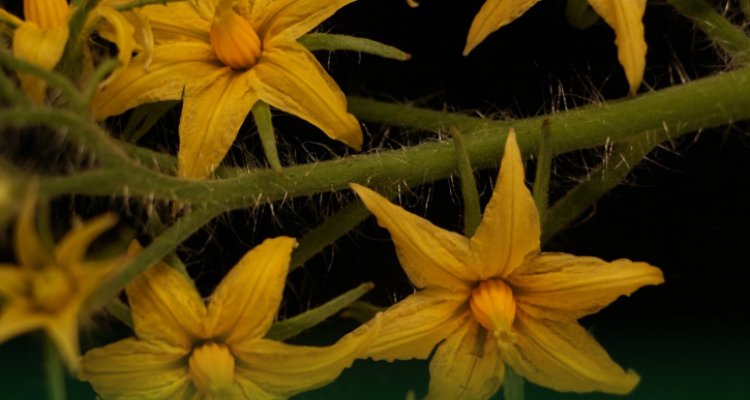
Project
Inflorescence termination in tomato
The architecture of a plant’s inflorescence determines the number of fruits and seeds that will be produced. In tomato, it is already known which genes regulate inflorescence branching, but it is not clear what determines the amount of flowers per branch. In this project, we aim to investigate which factors regulate inflorescence termination in tomato, based on variation within the species (GWAS) and comparison of gene regulatory networks between the model species Arabidopsis and tomato.
Background
For plants, the correct timing of developmental transitions such as flowering is essential, as it determines reproductive success. In addition, the structure of the inflorescence that subsequently develops also largely determines seed number and thus reproductive success. Inflorescence structure is an important agricultural trait, as it determines fruit yield and crop seed number, and depends on branch number and flower number per branch. While the gene regulatory network that regulates flowering in the model species Arabidopsis thaliana has been largely unravelled in the last decades, it is not yet clear how flowering time and inflorescence architecture is regulated in many other species. In tomato, research in recent years has unveiled the transition to flowering and inflorescence branching are regulated, but it is still unknown what determines the number of flowers per branch.
Project description
In this project, we will therefore investigate which regulatory factors (genes, hormones, sucrose) regulate the termination of inflorescence development in tomato. A gene regulatory network is already known from Arabidopsis, but the tomato inflorescence develops very differently. We follow different approaches, including forward genetics based on variation in a GWAS population of many different wild accessions. In addition, we perform reverse genetic approaches based on gene expression analysis (RNA-seq) and candidate genes based on earlier publications. Inflorescence development in tomato is investigated in detail, along with the role of hormones herein.
Publications
-
FRUITFULL-like genes regulate flowering time and inflorescence architecture in tomato
The Plant Cell (2022), Volume: 34, Issue: 3 - ISSN 1040-4651 - p. 1002-1019. -
TM3 and STM3 Promote Flowering Together with FUL2 and MBP20, but Act Antagonistically in Inflorescence Branching in Tomato
Plants (2023), Volume: 12, Issue: 15 - ISSN 2223-7747